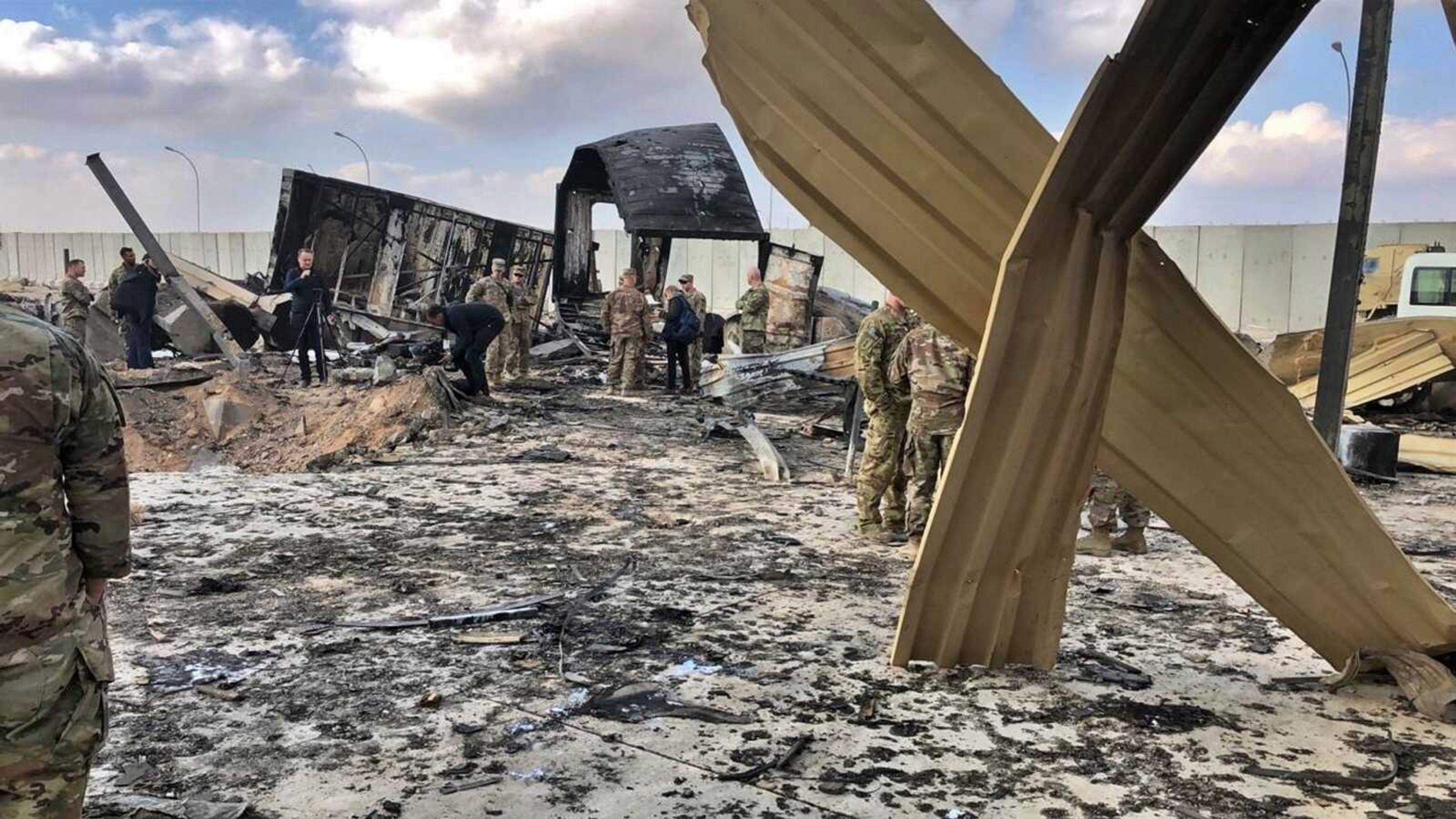U.S. troops in Iraq got warning hours before Iranian attack
AIN AL-ASAD AIR BASE, Iraq -- American troops were informed of an impending missile barrage hours before their air base in Iraq was struck by Iran, U.S. military officials said Monday, days after the attack that marked a major escalation between the longtime foes...
AIN AL-ASAD AIR BASE, Iraq -- American troops were informed of an impending missile barrage hours before their air base in Iraq was struck by Iran, U.S. military officials said Monday, days after the attack that marked a major escalation between the longtime foes.
At 11 p.m. Jan. 7, U.S. Lt. Col. Antoinette Chase gave the order for American troops at Ain al-Asad air base in western Iraq, to go on lockdown. Military movements froze as her team, responsible for emergency response at the base, sent out alerts about the threat. At 11:30 p.m., she gave the order to take cover in bunkers.
The first strike landed sometime after 1:35 a.m. Jan. 8 and the barrage continued for nearly two hours. Half way through the attack, Chase learned the missiles were being launched from Iran.
No American soldiers were killed or wounded, the U.S. has said, although several troops were treated for concussions from the blast and are being assessed, said Col. Myles Caggins, a spokesman at the base for the U.S. coalition fighting the Islamic State group.
"The reason why we pushed it at 2330 is because at that point in time all indications pointed to something coming," she told reporters touring the base. "Worst case scenario -- we were told was it's probably going to be a missile attack. So we were informed of that."
The Iranian attack was in retaliation for the U.S. drone strike near Baghdad airport that killed top Iranian Gen. Qassem Soleimani on Jan. 3.
An Associated Press crew touring the Ain al-Asad base saw large craters and damaged military trailers. Forklifts lifted rubble and loaded it onto trucks from an area the size of a football stadium. U.S. soldiers inspected portable housing units destroyed in the attack.
The sprawling complex in western Anbar province is about 110 miles west of Baghdad and is shared with the Iraqi military. It houses about 1,500 members of the U.S. military and the U.S.-led coalition fighting the Islamic State militant group.
The Iranian attack -- the most direct assault on America since the 1979 seizing of the U.S. Embassy in Tehran -- raised fears of a wider conflict although both sides have since indicated that they won't seek further retaliation, at least in the short term.
"There were more than 10 large missiles fired and the impact hit several areas along the airfield," Caggins said. At least 15-30 minutes passed between successive strikes, Chase said.
The attack destroyed facilities that house dozens of soldiers and one missile hit near an airstrip where six drones were parked but caused no damage, he said.
The base received a notification that the missiles were on their way, thanks to early warning systems, Caggins said, and troops were moved out of harm's way. He described soldiers who lived through the attack as "warriors."
Because of the long intervals between barrages, a few curious soldiers peered out to inspect the damage.
"After the first boom, I was confused and so I stuck my head out to see what it was," said Capt. Jeffrey Hansen, 30, from North Carolina. "The second boom blew a bunch of debris on my face."
The Ain al-Asad air base was first used by American forces after the 2003 U.S.-led invasion that toppled dictator Saddam Hussein. Facilities at the base were split with Iraqi forces when U.S. troops returned in 2014 leading a multi-national coalition to defeat IS militants.
President Donald Trump went to the air base in December 2018, making his first presidential visit to troops in the region. Vice President Mike Pence has also visited.
On Monday, most soldiers walked around the base without any body armor, amid large tents and street signs written mostly in English. The base was ringed by large concrete barriers blackened by the bombardment.
Chase said troops had conducted a drill the week before the attack and that they had received some warnings earlier in the day that had prompted them to move troops around the base.
"I had zero casualties and everybody is alive to tell the tale. So as far as I'm concerned, I couldn't be happier and I couldn't be prouder of the actions that the soldiers and the coalition forces took that night," she added.
Connect with the Southeast Missourian Newsroom:
For corrections to this story or other insights for the editor, click here. To submit a letter to the editor, click here. To learn about the Southeast Missourian’s AI Policy, click here.









